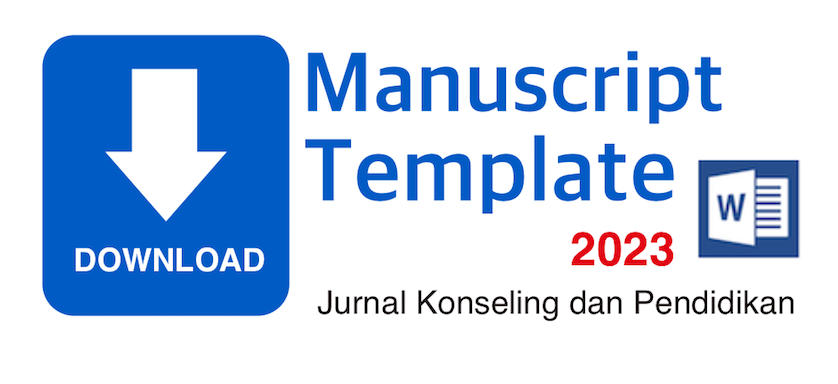Characters in hypno teaching and neuroscience: an overview
 ),
), (1) Sekolah Tinggi Ilmu Kesehatan Jenderal Achmad Yani
(2) Universitas Sains Al Quran Jawa Tengah di Wonosobo, Indonesia
(3) Universitas Pamulang
 Corresponding Author
Corresponding Author
DOI : https://doi.org/10.29210/145300
Full Text:
 Language : en
Language : en
Abstract
Keywords
References
Amaluddin. (2019). Pengaruh Metode Pembelajaran Hypnoteaching Terhadap Kemampuan Menulis Pantun Oleh Siswa Kelas XI Smk. Jurnal Pendidikan Bahasa Dan Sastra Indonesia, 4(1), 275–279.
Anwar, M. (2017). Menciptakan Pembelajaran Efektif melalui Hypnoteaching. Ekspose, 16, 469–480.
Asteria, P. V., Surabaya, U. N., Rohmah, S. K., Surabaya, U. N., Renhoran, F. Z., & Surabaya, U. N. (2017). Penerapan Metode Hypnoteaching. Jurnal Pendidikan (Teori Dan Praktik), 2(2), 150–155.
Bali, M. M. E. I., & Masulah, I. (2019). Hypnoteachingg: Solusi Siswa Learning Disorder. At-Turats, 13(1), 89. https://doi.org/10.24260/at-turats.v13i1.1188
Banu, R., & Nim, A. (2016). Penerapan Metode Hypnoteaching Dalam Upaya Peningkatan Kemampuan Komunikasi Matematik Siswa. Jurnal Matematika Ilmiah, 2(2), 95–99.
Carew, T. J., & Magsamen, S. H. (2010). Neuroscience and Education: An Ideal Partnership for Producing Evidence-Based Solutions to Guide 21st Century Learning. Neuron, 67(5), 685–688. https://doi.org/10.1016/j.neuron.2010.08.028
Cheung, C. kiu, & Lee, T. yan. (2010). Improving social competence through character education. Evaluation and Program Planning, 33(3), 255–263. https://doi.org/10.1016/j.evalprogplan.2009.08.006
Erniati. (2015). Pembelajaran Neurosains Dalam Pembentukan Karakter Peserta Didik Pada Pondok Pesantren. Hunafa: Jurnal Studia Islamika, Vol. 12, N.
Fadilah, M. (2018). Ekplanasi Ilmiah Metode Hipnotis terhadap Otak Manusia. Jurnal Filsafat Indonesia, 1(1), 8. https://doi.org/10.23887/jfi.v1i1.13969
Hakim, L., & Hariawan, R. (2017). Mengelola Pembelajaran dengan Metode Hypnoteaching. Jurnal Kependidikan, 16(1), 150–162. http://ojs.ikipmataram.ac.id/index.php/jurnalkependidikan/article/view/471/437
Hanifah, A. N., Sa’adah, N., & Sasongko, A. D. (2019). Hubungan Kemampuan Penalaran Matematis dan Motivasi Belajar Siswa SMK Melalui Model Pembelajaran Hypnoteaching. Teori Dan Riset Matematika, 4(September), 121–130.
Ismuzaroh, S. (2013). Penerapan hipnoteaching melalui neuro-linguistic programmingdalam pembelajaran kimia. Jurnal Pendidikan IPA Indonesia, 2(2), 178–182. https://doi.org/10.15294/jpii.v2i2.2720
Jayawardana, H. B. A., & Djukri, D. (2015). Pengembangan Model Pembelajaran Hypnoteaching Untuk Meningkatkan Motivasi Dan Hasil Belajar Biologi Siswa Sma/Ma. Jurnal Inovasi Pendidikan IPA, 1(2), 167. https://doi.org/10.21831/jipi.v1i2.7502
Khoiri, A., Agussuryani, Q., & Hartini, P. (2017). Penumbuhan Karakter Islami melalui Pembelajaran Fisika Berbasis Integrasi Sains-Islam. Tadris: Jurnal Keguruan Dan Ilmu Tarbiyah, 2(1), 19. https://doi.org/10.24042/tadris.v2i1.1735
Kusuma, D. A. (2019). Penerapan Ethnomathematics dan Hypnoteaching pada Mata Kuliah Matematika Kimia. JNPM (Jurnal Nasional Pendidikan Matematika), 3(2), 165. https://doi.org/10.33603/jnpm.v3i2.2279
Lismalinda, M. (2019). The Influence of Hypnoteaching Method on students Reading Motivation and Achievment in Secondary School. Indonesian Journal of English Language Teaching and Applied Linguistics, 4(1), 39915587.
Masdudi. (2018). Implementasi Teknik Hypnoteaching dalam Pendidikan Anak. Awlady:Jurnal Pendidikan Anak, 4(2), 20–45.
Mei-Ju, C., Chen-Hsin, Y., & Pin-Chen, H. (2014). The Beauty of Character Education on Preschool Children’s Parent-child Relationship. Procedia - Social and Behavioral Sciences, 143, 527–533. https://doi.org/10.1016/j.sbspro.2014.07.431
Pane, M. M., & Patriana, R. (2016). The Significance of Environmental Contents in Character Education for Quality of Life. Procedia - Social and Behavioral Sciences, 222, 244–252. https://doi.org/10.1016/j.sbspro.2016.05.153
Pincham, H. L., Matejko, A. A., Obersteiner, A., Killikelly, C., Abrahao, K. P., Benavides-Varela, S., Gabriel, F. C., Rato, J. R., & Vuillier, L. (2014). Forging a new path for Educational Neuroscience: An international young-researcher perspective on combining neuroscience and educational practices. Trends in Neuroscience and Education, 3(1), 28–31. https://doi.org/10.1016/j.tine.2014.02.002
Puspitasari, W. D. (2018). Implementasi Metode Hypnoteaching Untuk Meningkatkan Hasil Belajar Siswa Sekolah Dasar. Jurnal Cakrawala Pendas, 4(1). https://doi.org/10.31949/jcp.v4i1.715
Qomario. (2018). Pengaruh Hypnoteaching Dalam Contextual Teaching. IImiah Kependidikan, 9.
Rato, J. R., Abreu, A. M., & Castro-Caldas, A. (2011). Achieving a successful relationship between Neuroscience and Education: The views of Portuguese teachers. Procedia - Social and Behavioral Sciences, 29, 879–884. https://doi.org/10.1016/j.sbspro.2011.11.317
Rokhman, F., Hum, M., Syaifudin, A., & Yuliati. (2014). Character Education for Golden Generation 2045 (National Character Building for Indonesian Golden Years). Procedia - Social and Behavioral Sciences, 141, 1161–1165. https://doi.org/10.1016/j.sbspro.2014.05.197
Roswendi, A. S., & Sunarsi, D. (2020). Dinamika dan Perkembangan Hypnotherapy Dalam Perspektif Interdisipliner. Cilegon: Runzune Sapta Konsultan
Rusdi, fitria istiqoma dan A. (2015). Pengaruh Penerapan Mmetode Hypnoteaching terhadap Motivasi Belajar. 2(September), 83–90.
Salami. (2017). Hypnotic Teacher Dan Hypnoteaching. III(1), 34–44.
Sholekhudin, M. dan M. (2019). Pengaruh Metode Hypnoteaching Terhadap Motivasi Belajar Siswa Asrama Al-Falah Pondok Pesantren Darul Ulum Peterongan Jombang. Sumbula : Volume 4, Nomor 1.
Sholihah, W. M. (2020). Method And Model For Forming Teachers ’ Readiness In Inclusion Education Practices. 07(01).
Sobarna, A., Hambali, S., Sutiswo, S., & Sunarsi, D. (2020). The influence learning used ABC run exercise on the sprint capabilities. Jurnal Konseling dan Pendidikan, 8(2), 67-71.
Sri Imawati, P. K. W. (2018). Pengaruh Hypnoteaching Terhadap Motivasi Belajar Mahasiswa. Prosiding: Seminar Nasional Pendidikan Era Revolusi, 43–50.
Sugiyono. (2011). Metodologi Penelitian Kuantitatif, Kualitatif dan R&D. In Alpabeta, Bandung. Alfabeta.
Sunarsi, D. (2018). Pengembangan Sumber Daya Manusia Strategik & Karakterisrik Sistem Pendukungnya : Sebuah Tinjauan. Jurnal Ilmiah MEA (Manajemen, Ekonomi, & Akuntansi), 2(3), 178 - 194.
Taufik, A., & Suryanti, S. (2018). Efektivitas Penerapan Metode Pembelajaran Hypnoteaching Terhadap Hasil Belajar Matematika. HISTOGRAM: Jurnal Pendidikan Matematika, 2(2), 183. https://doi.org/10.31100/histogram.v2i2.206
Was, C. A., Woltz, D. J., & Drew, C. (2016). Evaluating character education programs and missing the target: A critique of existing research. Educational Research Review, 1(2), 148–156. https://doi.org/10.1016/j.edurev.2006.08.001
Zuhri Dj, M., & Sukarnianti, S. (2015). Using Hypnoteaching Strategy to Improve Students’ Writing Ability. Dinamika Ilmu, 15(2), 185. https://doi.org/10.21093/di.v15i2.101
 Article Metrics
Article Metrics
 Abstract Views : 930 times
Abstract Views : 930 times
 PDF Downloaded : 291 times
PDF Downloaded : 291 times
Refbacks
- There are currently no refbacks.

This work is licensed under a Creative Commons Attribution 4.0 International License.



